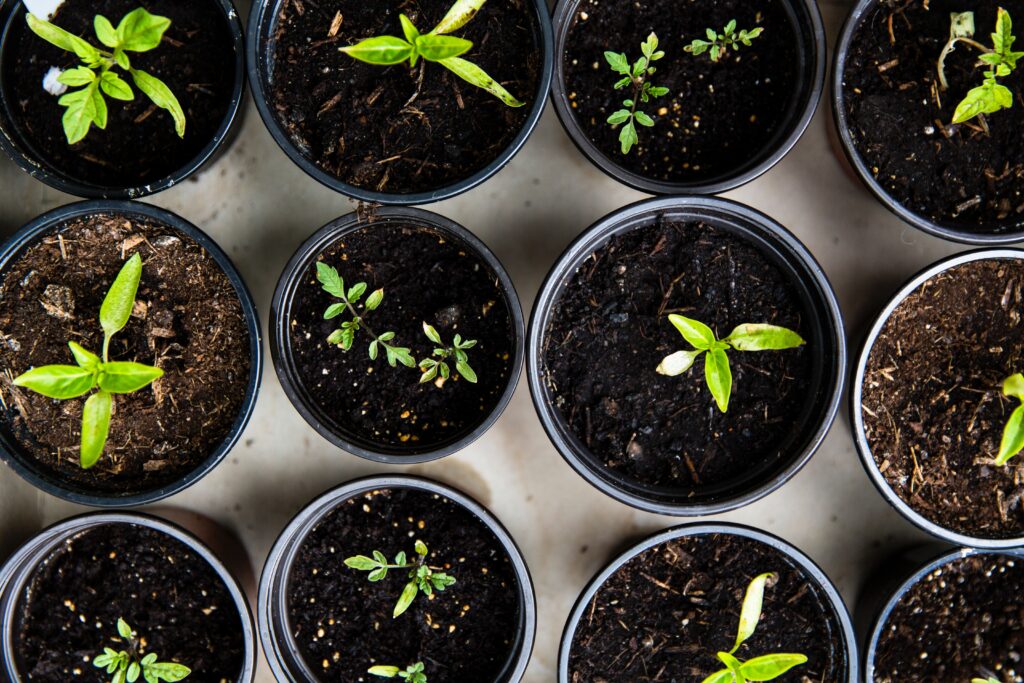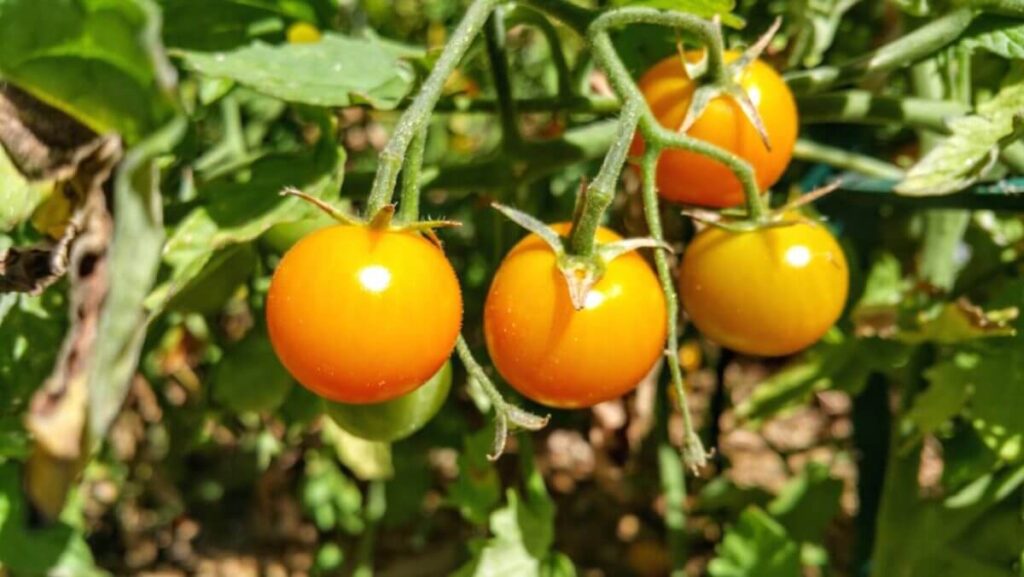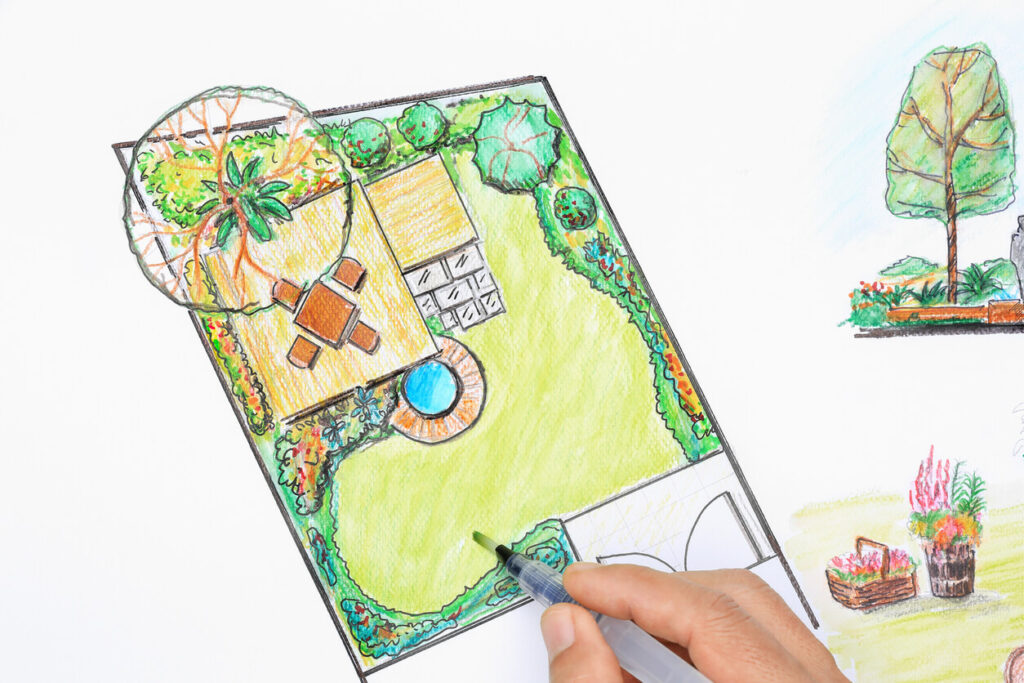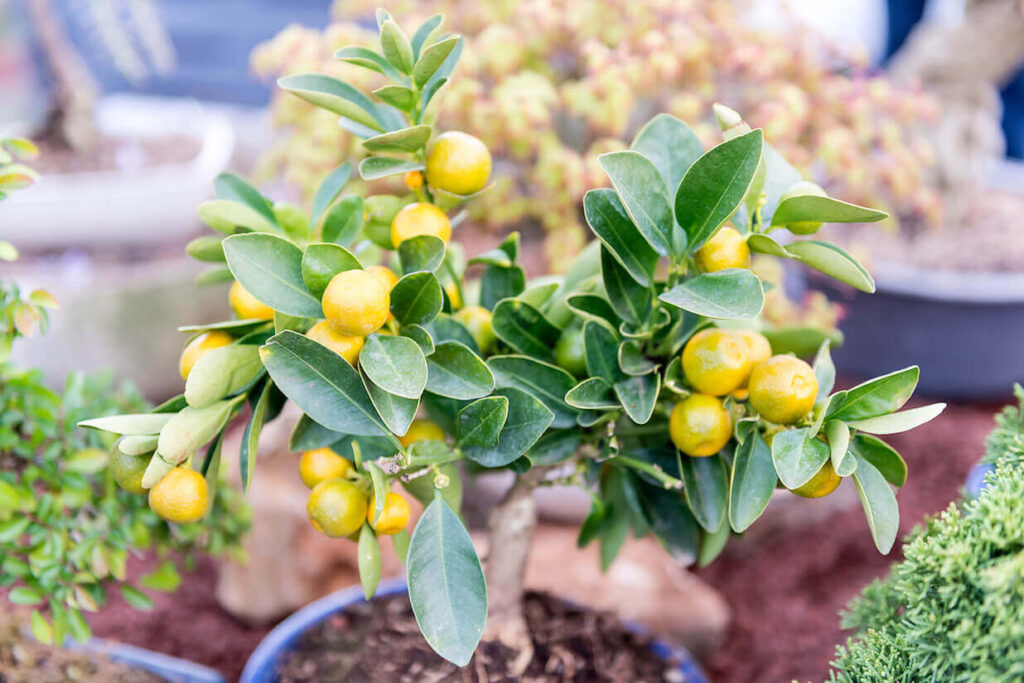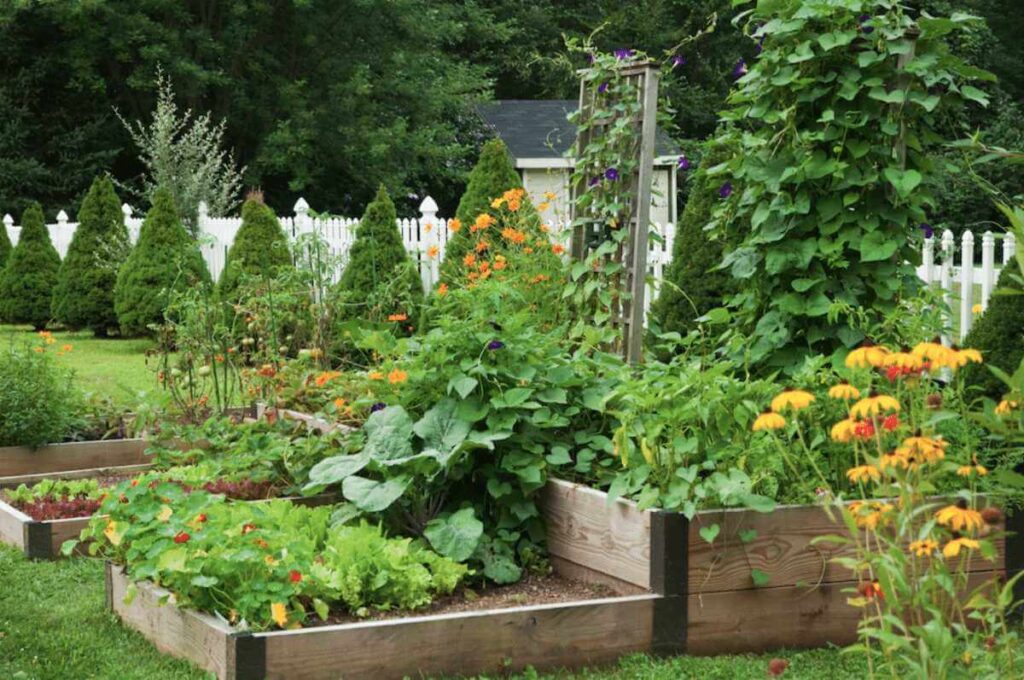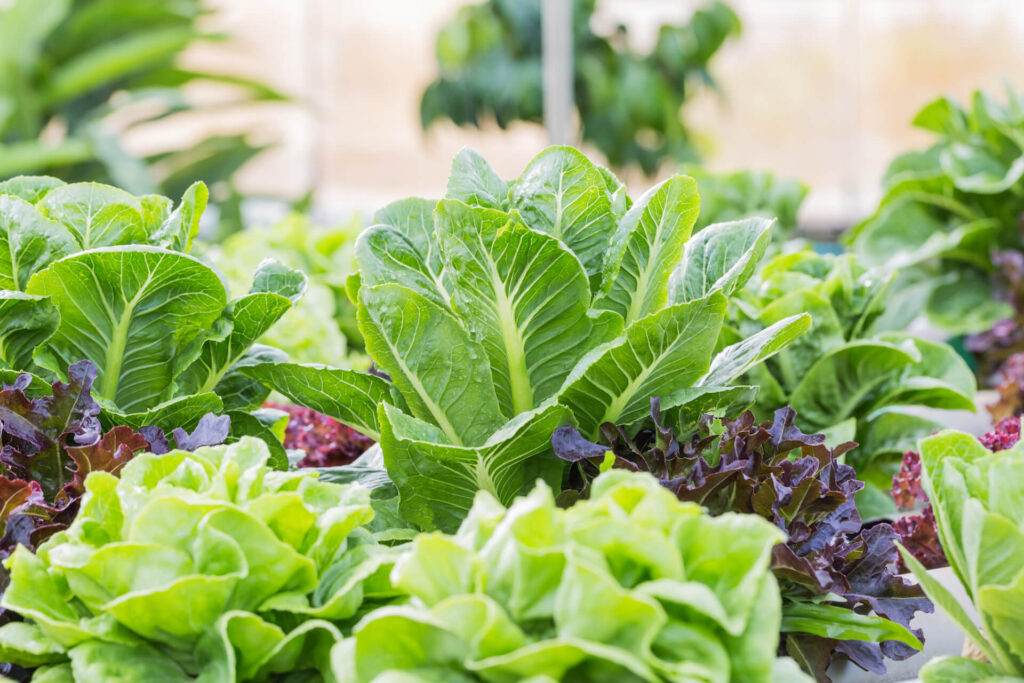Lettuce tastes great, is delicious, fresh, has a good texture, and is healthy. Lettuce thrives in the cool season, and is best enjoyed in the spring and autumn. Even a light frost can be tolerated by tender lettuce seedlings. Growing lettuce is simple and one of the most rewarding crops you can grow all year.
Find your planting zone to help guide the best time of year for you to grow lettuce here!
There are four types of lettuce: Crisphead, Loose-Leaf, Romaine, and Butterhead. It is possible to grow lettuce in your vegetable garden all year long by choosing the right varieties of lettuce. We will help you grow lettuce successfully and bring it from the garden to your table!
Lettuce Growing: The Ideal Soil Composition and pH
Healthy soil means healthy plants. Lettuce tastes and grows best in soil pH between 6.0-7.0. Amend your garden soil with rich organic materials and well-decomposed compost. For a strong crop, plant in well-drained soil that is rich in nutrients. The soil must be well-tilled, free from clumps, rocks, and is not too sandy. Lettuce seeds are small and can become stale if they aren’t able to germinate.
Growing Lettuce from Seed
It is easy to grow lettuce from seeds. You can either sow it directly in the ground or start it indoors. The growing season can be extended by starting indoors, and to keep a steady harvest, practice succession planting with new seedlings.
Growing Lettuce In Containers vs. Planting Lettuce In-Ground
Raised beds and containers are more likely to heat up quicker than in-ground gardens. Warmer soil temperatures allow gardeners to get started earlier in spring, extend the growing season into the fall, and provide more opportunities for crop successions. Raised bed gardening or container gardening allow gardeners to better control soil quality and provide the rich, loose soil that lettuce plants love. Lettuce can be grown in the ground as long as it is well-tilled, amended with nutrient rich soil, and free of rocks and debris.
Lettuce Spacing
- Plant Loose Leaf Lettuce 4 to 5 inches apart
- Butterhead or Romaine types of lettuce should be planted at least eight feet apart
- Crisphead Lettuce varieties should only be planted 16-18 inches apart
Lettuce light and temperature requirements
Lettuce thrives at temperatures between 45 and 65 degrees Fahrenheit. These quick-growing crops can be planted in full sunlight to produce more leaves, but too much heat or direct sunlight can cause the plant to bolt. You might consider choosing a spot that is sunny but also gets some shade. Consider companion planting your lettuce with other taller crops such as tomatoes, peppers, or corn. This provides shade protection (and also saves space in your garden!).
How to Water and Fertilize Lettuce
The key to a robust lettuce crop is keeping the soil moist, but not soggy, especially in hot weather. Lettuce plants need to be watered at least once per week.
To ensure that your lettuce plant seedlings are at the same temperature as their environment, you should place a humidifier around indoor plants. You want your lettuce plants to mature quickly in order to get maximum flavor and tenderness. For optimal growth, ensure that your lettuce plants are planted in a soil rich in potassium and nitrogen. Before planting your next crop, you can add organic matter like well-decomposed compost or rotted manure to the soil.
To support robust growth, you can add the fertilizer three to four weeks after sowing seeds or transplanting seedlings. Before you add the first liquid fertilizer feed, look for the first leaves. If you are transplanting, you can also sprinkle slow-release fertilizer. At the bottom of your planting hole, alternate liquid fertilizer and granular fertilizer throughout each growing season.
How long does it take to grow lettuce?
The average time it takes for Loose Leaf to mature from seed to harvest is 45 to 60 days. The short maturation time allows for plenty of succession planting opportunities, which can allow gardeners to have an endless supply of lettuce throughout the year. Butterhead lettuce and Loose Leaf lettuce can be harvested at any stage of their development. However, Romaine and Crisphead varieties take longer to mature fully. Allow Romaine and Crisphead lettuces to mature for 70 to 100 days before harvesting the entire head.
Lettuce Companion Plants
- Beets
- Carrots
- Corn
- Peas
- Radishes
- Spinach
Common Lettuce Diseases and Pests
- Rabbits – Garden fencing can be used to keep wildlife, such as rabbits, from eating your crops. To deter them, sprinkle blood meal around your garden beds if fencing is not possible.
- Aphids – A quick spray with the hose will be enough to get rid of harmful aphids from your lettuce crop. To organically repel these pests, you can use companion planting. Parsley planted next to lettuce can attract wasp-like aphid predators. Planting nasturtium next to your lettuce plants will attract aphid predators like wasps.
- Slugs – Stop slugs from eating your plants. Lay a pie plate in the soil to level the rim. Put some beer in the pie plate. The beer will be sought out by the slugs, but they won’t be able climb out.
- Powdery mildew – Keep your plants dry and spaced appropriately to allow for proper airflow.
Harvesting Lettuce
- Crisphead – Harvest lettuce in cool morning light. Before the outer leaves turn yellow, remove the stalk from the head. The lettuce head should feel firm and packed tightly with leaves. Use a sharp knife or a pair of scissors to remove the lettuce ball from its stem. Let the lettuce head dry in cool water. Keep it in the fridge.
- Loose Leaf – It’s easy to collect individual leaves when you harvest loose-leaf lettuce. When the leaves are approximately four inches high, remove any loose leaves from the base. This is before any stalks or bolts form. Toss the leaves in a colander with cool water.
- Romaine – You can either harvest the entire head of romaine lettuce at once by cutting off the stem at the base, or you can take individual leaves and harvest them from the outer layers. The inner leaves will continue to grow and mature. You can either rinse the romaine lettuce with cold water or pat dry it and then store it in the fridge until you are ready to use.
- Butterhead – Harvest butterhead lettuce the same way you harvest romaine lettuce. You can harvest the entire head of the plant when it reaches maturity, approximately 50-60 days after its planting.
Lettuce can be grown in spring and fall.
The temperatures in the 60s can bring out the best of lettuce all year long. For most varieties, seeds germinate well when temperatures are between 40 and 80 degrees Fahrenheit. Lettuce grows best in temperatures between 60-70 degrees Fahrenheit. Protective gardening devices like row covers can be used to extend the growth of lettuce in other areas. Greenhouses and cold frames can also be used.
Lettuce varieties that are recommended
Types of Romaine Lettuce
- Little Caesar is the ideal variety of lettuce to use in Caesar salads. These tall, slim heads make a great addition to small gardens. This variety produces small heads with sweet, crisp leaves.
- Little Gem produces strong, compact bright green heads. It is the best choice for gardeners looking for a crisp, firm romaine variety. It is a hardy variety of lettuce that has a sweet center.
- Vivian lettuce is larger than any of the others we have listed. It produces large, wide bunches with dark green leaves. The texture is similar to a butterhead variety.
Types of Loose Leaf Lettuce
- The Black Seeded Simpson can be grown in many climates and zones. It produces flavorful, light-green rippling bouquets.
- The Deer Tongue has a unique triangular-shaped leaf. This leaves provides a wide range of color, texture, and visual interest. This variety is slow-to-bloom and produces a rosette, which looks like deer tongues due to their shape. It is extremely productive and heat-tolerant.
- The Ruby Red will give your lettuce mixtures some color and visual interest. It yields curly leaves that taste sweet.
Types of Butterhead Lettuce
- Bibb produces small heads of rosette leaves, which are often used in salads or sandwich wraps.
- Although Boston is bigger than its sister, Bibb, it still has the same qualities and uses. Although leaves can be tender and brittle, they have a wonderful sweet taste.
- The Yugoslavian Red has beautiful variegated green and red leaves with loosely formed head. They are easy to grow in containers and have a mild buttery flavor that will delight any palate.
Types of Crisphead Lettuce
- Crispino is a great variety. It can tolerate less than ideal conditions and can also tolerate higher temperatures and more humidity. They have round heads that are firm and mild in flavor.
- Great Lakes is a high-performing variety that’s great in salads or on sandwiches due to its crisp leaves.
- Ithaca lettuce has a crisp round head that is perfect for sandwiches and salads. This variety has a slower rate of bolting and forming seed stalks than other varieties. This can help extend the growing season.
